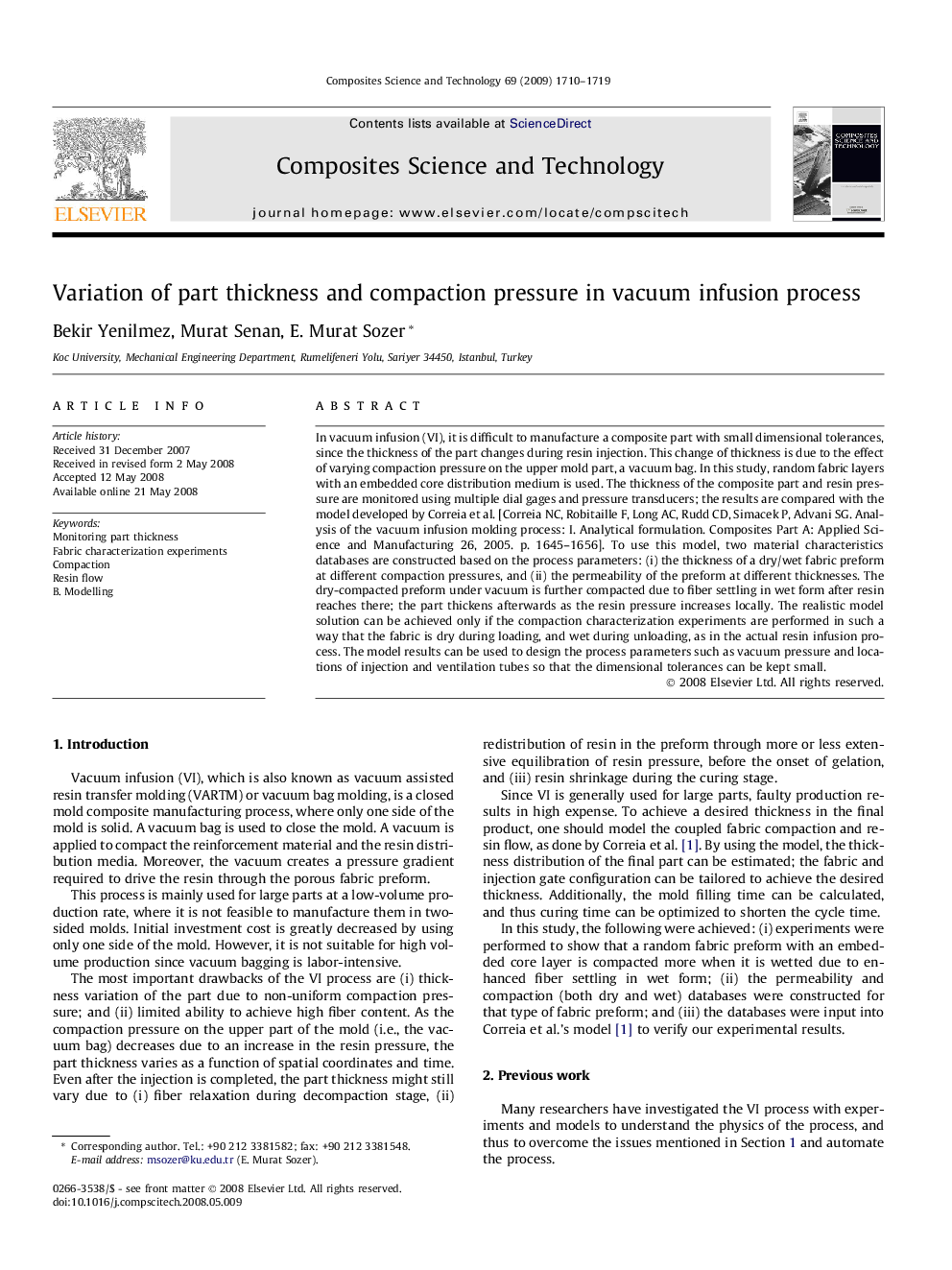| Article ID | Journal | Published Year | Pages | File Type |
|---|---|---|---|---|
| 821940 | Composites Science and Technology | 2009 | 10 Pages |
In vacuum infusion (VI), it is difficult to manufacture a composite part with small dimensional tolerances, since the thickness of the part changes during resin injection. This change of thickness is due to the effect of varying compaction pressure on the upper mold part, a vacuum bag. In this study, random fabric layers with an embedded core distribution medium is used. The thickness of the composite part and resin pressure are monitored using multiple dial gages and pressure transducers; the results are compared with the model developed by Correia et al. [Correia NC, Robitaille F, Long AC, Rudd CD, Simacek P, Advani SG. Analysis of the vacuum infusion molding process: I. Analytical formulation. Composites Part A: Applied Science and Manufacturing 26, 2005. p. 1645–1656]. To use this model, two material characteristics databases are constructed based on the process parameters: (i) the thickness of a dry/wet fabric preform at different compaction pressures, and (ii) the permeability of the preform at different thicknesses. The dry-compacted preform under vacuum is further compacted due to fiber settling in wet form after resin reaches there; the part thickens afterwards as the resin pressure increases locally. The realistic model solution can be achieved only if the compaction characterization experiments are performed in such a way that the fabric is dry during loading, and wet during unloading, as in the actual resin infusion process. The model results can be used to design the process parameters such as vacuum pressure and locations of injection and ventilation tubes so that the dimensional tolerances can be kept small.
